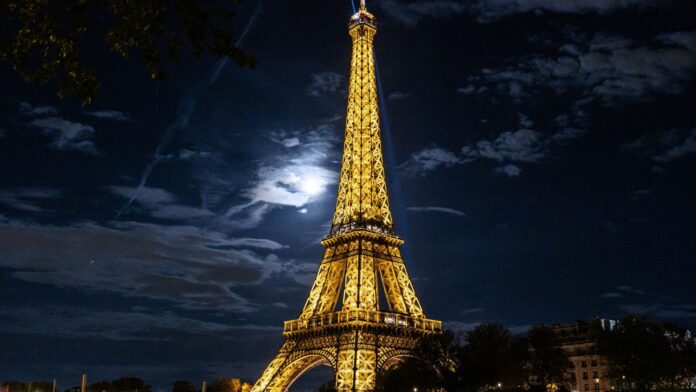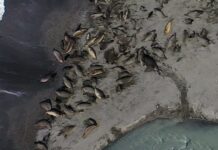Stargazers across the globe were treated to a spectacular celestial display on November 5th, as the largest and brightest supermoon of 2025 – known as the “Beaver Moon” – illuminated the night sky. This full moon, named for the period when beavers are particularly active preparing for winter, appeared exceptionally luminous as it approached its closest point to Earth in its roughly 27-day orbit. Photographers seized the opportunity to capture this event, sharing a wealth of striking images that showcase the moon’s beauty alongside familiar landmarks and landscapes.
The ‘Beaver Moon’: A Time-Honored Name
The November full moon has long been called the “Beaver Moon,” a designation rooted in centuries-old observations of nature. The name reflects the increased activity of beavers in this time of year as they build and repair dams in anticipation of the coming winter. It’s also referred to as the “Frost Moon,” and the “Digging/Scratching Moon,” highlighting the behaviors of bears preparing winter dens.
A Global Showcase of Lunar Beauty
Photographers worldwide documented the supermoon, capturing diverse and stunning perspectives. Here are some highlights:
- North Carolina: Kevin McCarthy’s detailed image of the Beaver Moon hanging above Charlotte, North Carolina, showcases the moon’s brightness and detail, even captured handheld with a telephoto lens.
- Turkey: Omer Urer’s shot features the moon rising over Düzce, Turkey, with a neon sign and expansive lava fields providing a unique backdrop.
- Australia: Robbie Pesiwarissa captured a gorgeous view of the supermoon shining above the Sydney Opera House, a fortunate sight after last month’s overcast conditions.
- Mexico: Luis Gutierrez cleverly combined sport and astronomy, snapping the moon alongside the floodlights of a baseball stadium in Hermosillo.
- France: Thibaud Moritz provided both a wide-field view of the Eiffel Tower bathed in moonlight and a beautifully detailed shot of the moon’s disk peeking behind the tower.
- Colombia: Juancho Torres’ atmospheric image showcases the full moon glowing over the Monserrate Sanctuary in Bogotá.
- China: A composite shot from Shandong Province captured the moon appearing as an artificial star, requiring multiple exposures to balance the foreground and distant lunar subject.
- Italy: Lorenzo Di Cola’s photo of a yellow moon near the summit of Monte Prena in Italy demonstrates a phenomenon known as Rayleigh Scattering. This causes shorter, bluer wavelengths of light to be scattered more than longer, redder wavelengths when the moon is close to the horizon, resulting in a warmer, yellowish hue.
- Hungary: David Balogh caught a well-timed shot of a commercial jet appearing to gently nudge the yellow moon from near Budapest Airport.
- Gaza: Mahmoud Abu Hamda’s wide-angle view showcases the moon shining over Gaza City, with fishermen navigating the coastal waters.
- Germany: Kirill Kudryavstev’s photograph highlights a commercial airliner’s plume darkening the lunar surface, revealing bright craters and lunar seas.
- Spain: Didem Mente’s photo perfectly aligns the full moon’s disk to resemble a halo above the Monumento a la Inmaculada Concepcion in Seville.
What’s Next for Supermoon Enthusiasts?
Even if you missed this spectacular display, there’s still plenty to look forward to. Both the December 2025 and January 2026 full moons will occur as the moon nears its closest point to Earth in its monthly orbit, known as perihelion, guaranteeing a series of spectacular supermoons. Photographers looking to capture these events can consult guides to photographing the moon and roundups of the best lenses and cameras for astrophotography in 2025.
The recent Beaver Moon provided a stunning reminder of the beauty and grandeur of our solar system, captured through the eyes of talented photographers around the world. >







































































